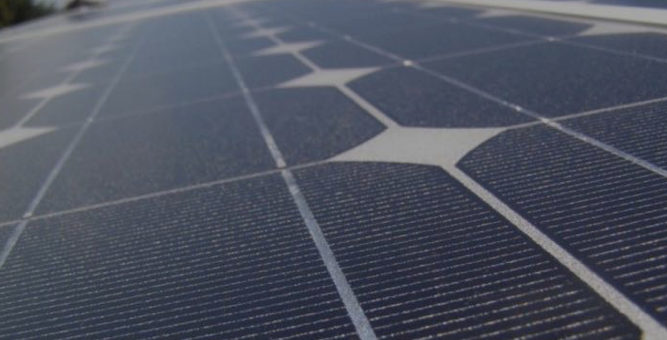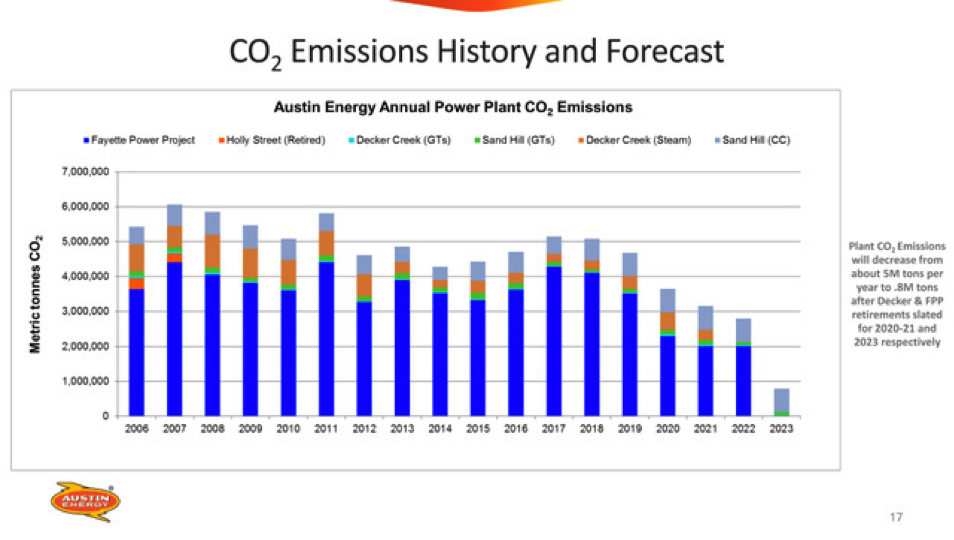Guest Editorial – by Al Braden
Al Braden is a local environmental activist and photographer. He is also a member of the Electric Utility Commission Resource Planning Working Group, which is helping to advise Austin Energy and City Council on where Austin should get its energy for the next 10 years. Since energy is a major source of greenhouse gas emissions, this will have a big impact on Austin’s climate policies and the speed at which we become a net-zero emission city.
As part of the EcoNetworks’ Beyond The Strike series, Al is regularly sharing his experiences serving on the working group and helping to influence Austin’s climate future.
We have come a long way in Austin to clean up our electric energy carbon footprint. Part of this is still in the works. Sometimes it’s hard to appreciate what hasn’t quite happened yet. This chart by Austin Energy COO Charles Dickerson – shared with the Electric Utility Commission last November – shows the transition now well underway to get off carbon.
The two Decker steam units will close, one in 2020 and the other in 2021 – orange bar. We will close our 1/3 share of the Fayette Coal Plant – blue bar – by the end of 2022. It is by far our largest carbon dioxide and toxic pollution emitter.
The largest carbon emitter left in Austin’s portfolio will be the combined cycle gas plant at Sand Hill – gray bar. A small amount of natural gas generated CO2 remains with the gas peaker plants at Decker Lake and Sand Hill. They run only in extreme situations and provide a up to a 470 MW cushion when all else comes up short and prices spike. They run very few hours per year and their emissions are the green bar seen at the bottom of the stack in 2023. I believe batteries will make them obsolete well before 2030.
For me, the key questions in planning for zero carbon by 2030 are:
- Can we restrict/reduce our running of the Fayette coal plant from now till 2022 – only running it in summer peak times while we ramp up solar to replace it?
- How soon can we close Sand Hill’s combined cycle plant and eliminate its carbon emissions? Is 2025 possible/affordable?
- How soon before 2030 will batteries and/or other strategies allow us to close the natural gas peaker plants and get off carbon all together?
As the 2030 Generation Plan Working Group kicks off, Austin Energy has released a series of studies demanded by City Council back in 2017.
Key among them is, Renewable, Carbon Free and Battery Storage Studies. Though hard to read, the chart on page 36 shows various scenarios with a range of 75 percent to 100 percent renewable energy in both a ‘Low Risk’- low natural gas price future – and ‘High Risk’ – high natural gas price future. The difference between 75 percent and 100 percent renewable energy is negligible – and all scenarios are well below the affordability goals. Peak load and natural gas prices are the key drivers on the Texas grid at the moment.
As the prices of utility scale solar decrease below fossil fuel costs, we can afford to eliminate fossil fuels from Austin Energy all together while keeping our rates low across the board – from low income families to large industrial users. Our task is to find that mix that will get us to zero carbon 2030 – as close to 2025 as possible.
The Working Group information is online. You can attend its meetings and express yourselves with Citizen Communication the second meeting of each month.
Meeting Dates:
- September 12 and 26
- October 10 and 24
- November 7 and 21
- December 5 and 19
- January 9 and 23 (if required)
Please note – editorials and sponsored posts are written by guest writers to inform and educate the community on a variety of different viewpoints, as well as to share information about local eco-friendly businesses and organizations. However, they do not necessarily reflect the opinions of the Austin EcoNetwork.





